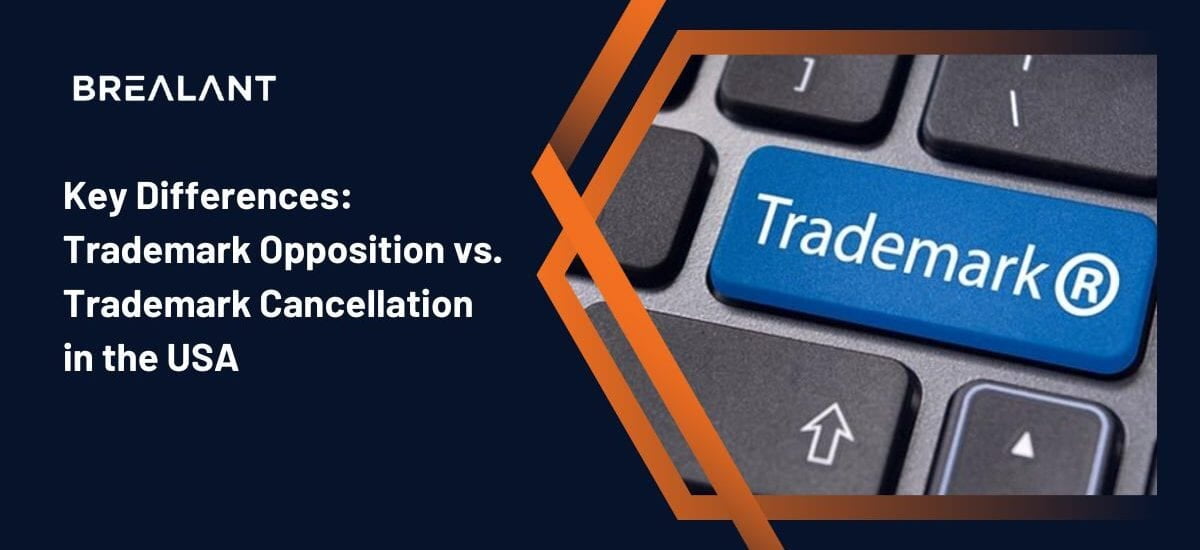
Trademark opposition is when someone files a legal case against a trademark that they believe to be infringing on their own mark. Trademark cancellation is when the trademark holder agrees to cancel the trademark before it goes into effect. Trademark opposition and trademark cancellation are two legal procedures that can be used to stop someone from using your trademark in a harmful way. Before you take any action, it’s important to understand the different aspects of these two processes.
A trademark can be a valuable asset for businesses. When someone illegally uses your trademark, it can damage your brand, and financial losses can occur. Trademark opposition is the first step in protecting your trademark. This process involves filing paperwork with the USA Patent and Trademark Office (USPTO) to oppose someone’s use of your trademarks.
A trademark can be an important asset for a business. When properly protected, it can provide sellers with exclusive rights to identify their products and services and deter would-be competitors from using similar names. Trademark opposition occurs when someone objects to a trademark registration on the grounds that it is too similar to a previously registered trademark. If the objection is successful, the mark may be canceled. A trademark cancellation action results in the loss of all rights to the mark, including the right to sell products or services under that name. A trademark can be a valuable asset for businesses. When someone illegally uses your trademark, it can damage your brand, and financial losses can occur.
What is the difference between Trademark Opposition and Trademark Cancellation in the USA?
There are a few key differences between opposition and cancellation. When someone files an opposition, they are only asking for a ruling that the mark is not infringing. If you win this battle, any products with that particular trademark will have to stop production. However, if you lose an opposition, you still can sell products with the disputed mark. The only thing that would happen then is ads for those products would possibly be taken down. Cancellation, on the other hand, means that the trademark holder has officially given up on their mark. From this point forward, no products or advertising using that trademark can take place.
- Trademark opposition is the first step in protecting your trademark. This process involves filing paperwork with the US Patent and Trademark Office (USPTO) to oppose someone’s use of your trademarks. If you decide to proceed with trademark opposition, it’s important to know what else you can do to protect your trademark. Trademark cancellation is the second step in protecting a trademark. This process involves filing paperwork with the USPTO to stop someone from using your trademarks.
- Trademark opposition and trademark cancellation are two very different procedures in the United States. Trademark opposition is when a party files an opposing declaration with the USPTO to protect their registered trademark. Trademark cancellation is when the USPTO cancels a trademark because it no longer meets any of the legal requirements for registration.
- Trademark oppositions are always contested, whereas trademark cancellations happen far less frequently. This is because opposition are often filed by companies that believe they have a good chance of winning. Cancellations, on the other hand, are often done in order to remove a trademark from the public domain or to protect another party’s trademark rights.
- There is a big difference between opposition and cancellation. Opposition is when someone files a legal complaint against your mark with the USPTO. This is done in an attempt to block your mark from being registered with the agency. Cancellation happens when your mark is actually pulled from the registry because it has been determined that it cannot be legally protected.
A mark can be registered with the US Patent and Trademark Office (USPTO) as part of the federal trademark program in order to protect it from being used by others without the owner’s permission. Once a trademark has been registered with the USPTO, it enters into the public domain and can be used by anyone. Registered trademarks may also be opposed or canceled.
Also Read: A Guide to Trademark Opposition in the USA
Conclusion
It’s important to understand these different types of trademark protection so that you can make informed decisions about how to protect your intellectual property rights. Knowing what steps to take when defending a trademark is essential for businesses of all sizes. By carefully considering the different options available, you can ensure that your trademarks are safe and protected.
There is a big difference between these two procedures, and it can impact how your trademark application will progress. If you’ve been wondering which procedure your trademark application may fall under, get the right advice from the experts from Brealant TM. The well-known IP service provider firm provides its clients with efficient IP solutions and extends its services by guiding its clients about the application and registration process of intellectual property.

